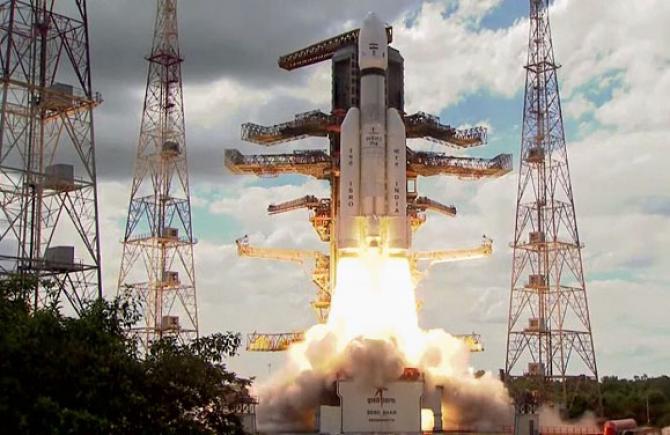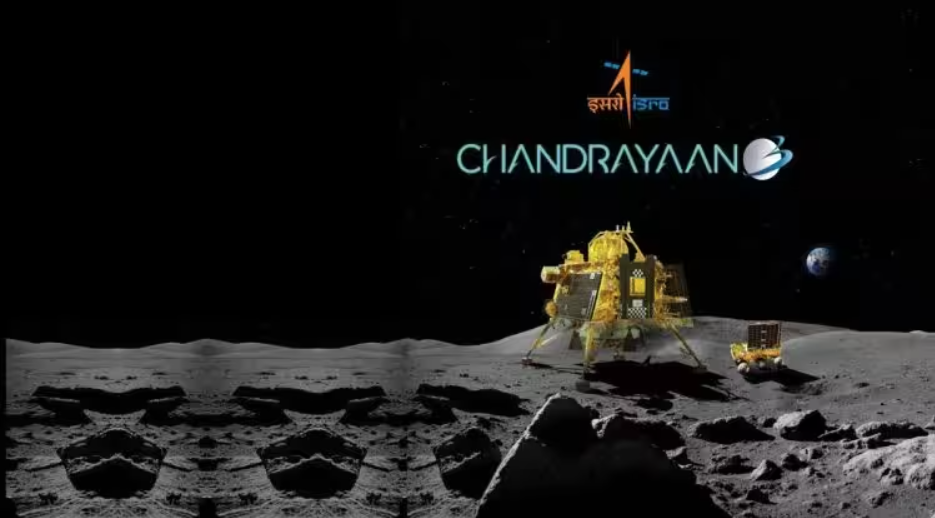India had successfully launched Chandrayaan One in October 2008, but ISRO lost contact with it on August 28, 2009. Chandrayaan-2 under the Moon mission was launched on July 22, 2019, but due to technical problems, the mission could not land on the surface of the Moon. However, Chandrayaan-3 has been successfully launched and is now scheduled to land on the lunar surface in just a few days, on August 23 or 24, 2023. Chandrayaan 3: India ready to land on the surface of the moon for the third time!
India started its moon mission with ‘Chandrayan I’ but this satellite lost contact with ISRO after 10 months. It was developed at a cost of Rs.386 crore. After that, India started making ‘Chandrayan 2’ which was to be launched in January 2013. 978 crore rupees were spent on its preparation. India had sought help from Russia to build its lander, but due to some technical reasons, the matter was delayed till 2015. After that, the Indian experts had decided to build the lander on their own, fully trusting in their own capabilities. Within a few years, our country had developed a low-cost lander. Thus, the journey of Chandrayaan 2 started from 22nd July 2019 which successfully continued till 7th September 2019. At the last minute, ISRO lost contact with the lander, causing it to ‘hard land’ India could not achieve success in Chandrayaan 2 mission but it did not lose heart but decided to make Chandrayaan 3 and in just 4 years it successfully launched Chandrayaan 3 on 14 July 2023.
Chandrayaan 3 is orbiting the moon. He has also sent pictures of the moon. The satellite will make a soft landing on the South Pole of the Moon in the next 5 days (on August 23 or 24). After that, ISRO will start the probe on this part of the moon. It should be noted that only a few days after the launch of Chandrayaan 3, Russia also sent its moon mission “Luna 25”. This mission will also land on the same part of the moon where Chandrayaan 3 will land. However, it will land on August 21 or 22, i.e. a day or two before Chandrayaan 3’s landing. Since Chandrayaan 3 will land in a few days, it is important for students to know some important things about our moon mission. Chandrayaan 3, our third planet sent to the Moon, is orbiting the Moon. About this, ISRO (Indian Space Research Organization) is confident that it will successfully soft land on the surface of the moon. Know the details of our moon mission:
REDCON1 Total War Pre Workout Powder
What is Chandrayan 3?
Chandrayaan 3 is our third satellite to go to the moon after Chandrayaan I and Chandrayaan 2. It was launched on July 14 from Sri Harikota Space Center and will land on the surface of the Moon on August 23 or 24, 2023. . It consists of ‘Propulsion’, ‘Lander’ and ‘Rover’. All these machines are manufactured in the country itself. The main scientific objective of this mission is to map and find water on the Moon.
How will it work?
When Chandrayaan-3 is within 100 km of the Moon, the lander and rover will disengage from propulsion. The task of propulsion is to successfully bring the lander and rover to within 100 km of the moon, then the lander will float and make a soft landing on the moon. will collect information. It should be noted that this information will be available to ISRO.
What are ‘Lander’ and ‘Rover’?

What is a propulsion module?
The propulsion module will move the lander and rover into lunar orbit. It is a box-like structure with a large solar panel mounted on one side and a large cylinder on top that acts as a support for the lander.
Why is the lander named “Vikram”?
The Chandrayaan-3 mission will land the lander and rover on the lunar surface. A rover is a wheeled machine that will travel on the surface of the moon and examine the compounds there. It will send data to Earth with the help of a lander. It will land on the south pole of the moon. After the success of this mission, it will become the fourth country in the world to do so after India, Russia, USA and China.
Lander, attributed to Dr. Vikram A. Sarabhai. He is said to be the founder of India’s space program. Vikram Sarabhai was awarded Padma Bhushan in 1966 and Padma Vibhushan in 1972.
Why is the rover named “Pargyan”?
Pragyan is a Sanskrit word meaning wisdom, intelligence and wisdom.
Rover has 6 wheels. This instrument will examine the surface of the moon and find out whether there is frozen water on the moon or not. Apart from this, it will send details of lunar soil to ISRO. The instrument will also investigate how the Moon’s atmosphere changed during human evolution and even earlier, and how that affected Earth.
Difference between Chandrayan 2 and Chandrayan 3?
Chandrayaan 2 had 3 main parts:
Orbiter, Lander and Rover. But in Chandrayanan 3, the orbiter has been replaced by a “propulsion module”. The lander carries an instrument called the Instrument for Lunar Seismic Activity (ILSA) that can measure the plasma density on the Moon.
The total weight of the spacecraft of Chandrayaan 2 was 3,850 kg, while the weight of Chandrayaan 3 is 3,900 kg.
The weight of the propulsion module in Chandrayaan 3 is 2,148 kg, the lander is 1,752 kg and the rover is 26 kg.
Chandrayaan 2 was designed to remain active for 7 years. However, Chandrayaan will become inactive in 3 to 6 months.
Chandrayaan 2 had one camera installed to detect threats, but Chandrayaan 3 has two cameras.
Active missions to the Moon
As of July 2023, Moon has the following active missions:
NASA’s Themis mission
NASA’s LRO mission
Chandrayaan 2 of Isru (in the orbit of the Moon)
KPLO Mission to Korea
NASA’s capstone
Isro’s commitment to the Sun followed by the Moon
After the successful launch of Chandrayaan-3 towards the Moon, ISRO plans to launch an observatory named Aditya L-1 to study the Sun. Its launch date is yet to be announced. However, according to reports, it could be launched in the first week of September 2023. It should be noted that this will be the first Sun mission by the country. After 4 months of launch, it will reach L-1, the space between the Sun and the Earth, and from here, ISRO’s research on the Sun will begin. It should be noted that there is no eclipse of the sun at this place. El One means the first log-range location between the Earth and the Sun where anything remains static, i.e. if an object is dropped here, it will remain suspended in space. has no effect, so scientists can continue their research without any hindrance.
It should be noted that the Sun missions of the United States, Germany and the European Space Agency are active. We will also join this race in September.





